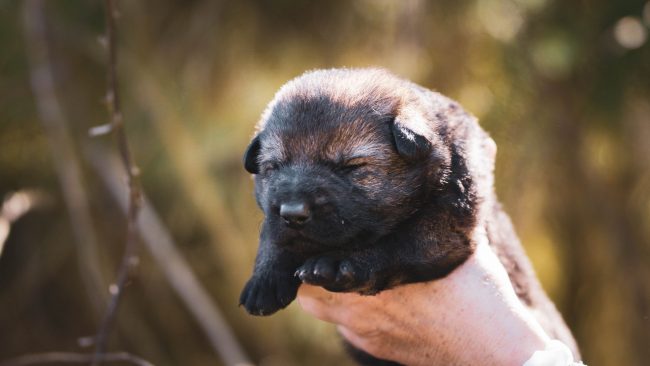Table of Contents
The most beautiful dogs we see today are the results of successful breeding plans. Breeders often consider different breeding methods to achieve their goals. Linebreeding is a starting point to begin a new bloodline of dogs. However, a lot goes into the process to achieve desired results.
Let us discuss the line breeding process in detail and look at the charts, rules and other considerations to help breeding enthusiasts get started.
Linebreeding Dogs – A Complete Guide
Linebreeding is a form of inbreeding that experienced breeders use as a part of their program to produce breeds with desired characteristics. Inbreeding involves mating related dogs having one or more relatives in common. Beginning a new bloodline is often a mark of achievement for breeders, and it can take some time to get it done. Line breeding is generally used as the first step in beginning a new bloodline in dogs.
Line breeding is the concentration of desired characteristics. The form of breeding gives some control over families. In this method, one of the selected parents should have one or more common ancestors in the pedigree in the last five generations. The ancestors could result from successful line-breeding of dogs with valuable traits.
What is Line Breeding in Dogs?
Line breeding is the technique of mating related dogs to get the desired qualities in their genetic makeup. For this type of breeding, a stud and dam are selected from good pedigrees of dogs as the foundation. Then, you consider the qualities you are looking for in the breed, like bone structure, temperament or head size. These dogs are then bred, and a female litter is retained along with the original dam and sire.
Next, three generations of female pups are bred back to the original sire to concentrate the blood. This is called line breeding because you are mating in a line back to the original parent. After three generations, the cycle is broken, and the female is mated to an outside male. A female from this breeding is retained and bred back to the original male.
It is often a good idea to breed your original dam and sire multiple times. You can also consider mating dogs from different litters of the same parents. Make sure you never breed two dogs from the same litter as it can result in genetic defects…
Line Breeding Chart For Dogs
AKC Line Breeding Rules
The American Kennel Club (AKC) is a registry of purebred dogs in the United States that promotes events and shows for dogs. To meet the rules of AKC, the first thing a breeder should consider is that the dam and sire are both registered with the club because only then can the litter be registered with AKC. The AKC has no health standard for line breeding; it only imposes an age restriction. AKC rules do not allow, except in special cases, registration of a litter coming from a sire younger than 7 months or older than 12 years of age and a dam younger than 8 months and more than 12 years of age at the time of breeding.
When artificial insemination is used for line breeding, the AKC requires DNA certification to register the litter. It allows the procedure to use fresh, extended or frozen semen and suggested guidelines are followed.
Line Breeding Dogs – How Close Is Too Close?
Close line breeding means close relatives are mated together. ‘Too-close breeding’ is when parents are mated with their children or full siblings are bred together. This is called first-degree relative mating, which can pose a significant danger of inheriting a disorder. Another close form of breeding involves mating between grandparents and grand offspring, half-siblings, uncle/aunt and nephew/niece and double first cousins.
Second-degree breeding is also too close to line breeding because it substantially increases the chances of getting an inherited disorder. When parents are too closely related, there is a higher chance that the offspring suffers from a genetic disorder. When closely related animals, they are more likely to carry defective genes. When the same genes come together in the litter, genetic defects have an increased risk of occurring.


